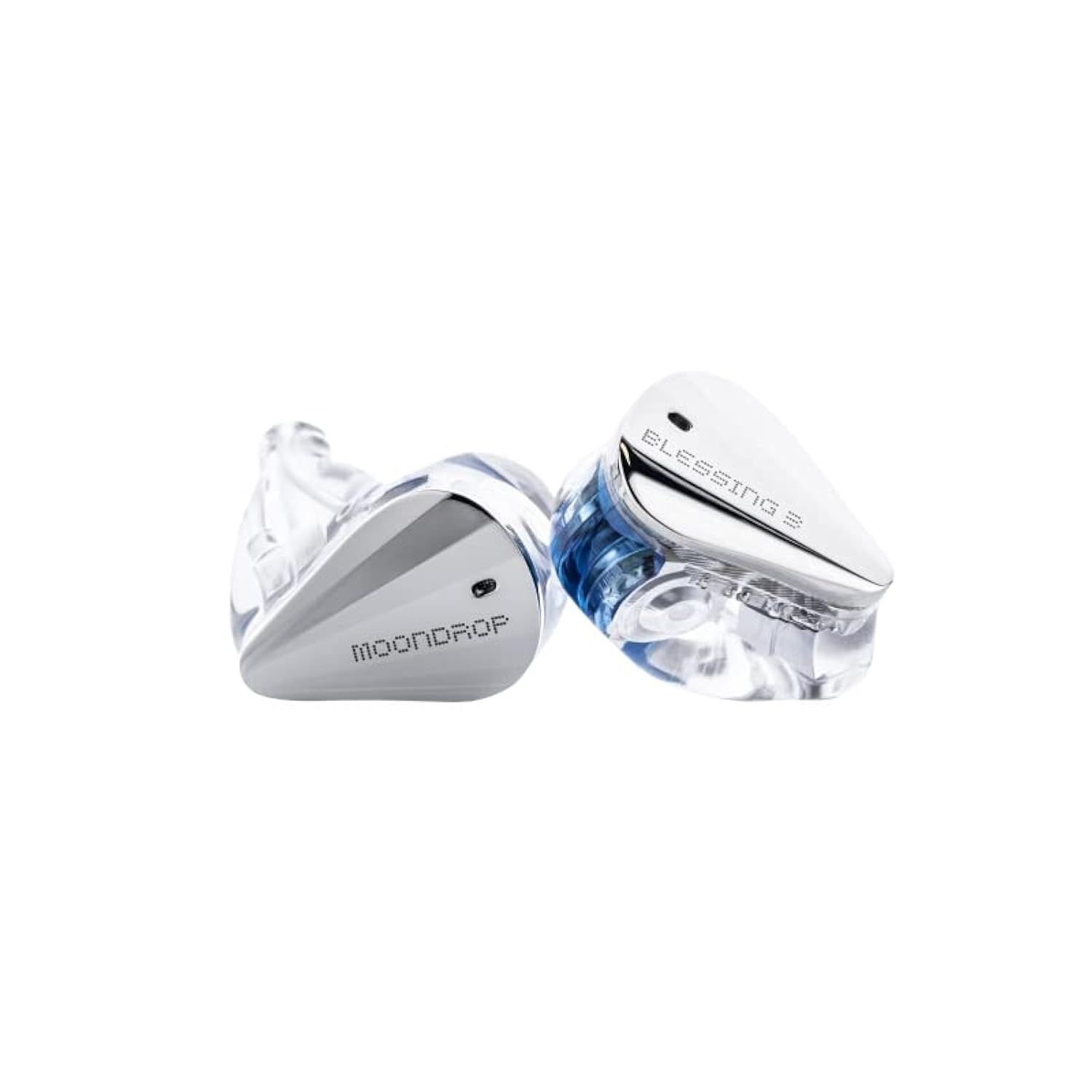Blessing 3vs.Cantor
Sound & Specs Comparison
Information
Both IEMs are widely regarded in the audiophile community. See how they differ in terms of sub-bass response, upper mids, clarity, and overall tonality. Spider charts and rating breakdowns included.
Objective Comparison
Facts, details, stuff.
| General Info | Blessing 3 | Cantor |
|---|---|---|
| Brand | Moondrop | AFUL |
| Country | China | Taiwan |
| IEM Description | The Moondrop Blessing 3 is a hybrid IEM that blends technical detail with a clean, spacious sound. Featuring dual dynamic drivers and four balanced armatures, it delivers tight bass, clear mids, and airy treble with impressive precision. The overall tuning is balanced with a slightly bright edge, making it well-suited for those who enjoy clarity and separation without excessive warmth. | The AFUL Cantor combines technical precision with musicality in a hybrid design. Featuring a dynamic driver for powerful bass and multiple balanced armatures for clean mids and sparkly highs, it delivers a spacious soundstage with excellent separation. Tuning leans slightly toward a balanced-bright signature, making it a solid choice for detail lovers who still want some low-end punch. |
| Price Level | 100 – 500 | 500 – 1.000 |
| Housing & Driver | ||
|---|---|---|
| Driver Config | Hybrid | Multi-BA |
| Driver Types | Dynamic Driver + Balanced Armature | Balanced Armature |
| Shell Material | – | – |
| Cable | – | 4Braid 5N OFC Cable |
| Technical | ||
|---|---|---|
| Freq Range | – | – |
| Impedance (Ω) | – | 20 |
| Sensitivity (dB) | – | 106 |
| Crossover | – | RLC Network Electronic Crossover |
| Platform Info | ||
|---|---|---|
| Comments | 0 | 2 |
| Visit Count | 87 | 134 |
| External Reviews | 0 | 1 |
Meta Ratings
// Nothing to compare yet.
Sound Characteristics
Cantor delivers s tighter sub-bass response, controlling low-end rumble with more precision than Blessing 3 (8.5 vs 6). It enhances basslines with a more energy and grip, giving them a livelier feel compared to Blessing 3 (9 vs 5.5). Listeners may find the low-end impact on It a more engaging during high-dynamic passages (8.5 vs 6.8). Male vocals and lower instruments sound a richer and better defined on It, unlike Blessing 3 which can seem hollow (8.5 vs 7.3). It strikes a a better balance between presence and smoothness in the upper mids compared to Blessing 3 (8 vs 7). It provides a more refined lower treble, resolving fine detail and air with greater finesse than Blessing 3 (8 vs 6.8). The stereo field on It feels b wider and more holographic, whereas Blessing 3 sounds more intimate (8 vs 7.3). The retrieval of faint audio cues on It is d more convincing, while Blessing 3 tends to gloss over them (8.8 vs 6.8). It separates instruments a more distinctly, helping complex passages remain coherent where Blessing 3 blends them (8.3 vs 6). It shows a better control of masking effects, maintaining clarity across frequency ranges better than Blessing 3 (8 vs 5.3). It adds e more body and density to musical notes, enriching the overall texture compared to Blessing 3 (7.5 vs 6.3). It delivers n stronger slam and physicality, making drums and transients hit harder than Blessing 3 (8.5 vs 6). The upper range of vocals is n cleaner and more forgiving on It, helping it avoid sibilant harshness that Blessing 3 shows (8.5 vs 4.8). It renders timbres with a better harmonic balance, preserving the character of instruments more accurately than Blessing 3 (7.5 vs 5). The overall tonality of It is s more balanced and cohesive, offering a sound signature that feels better tuned than Blessing 3 (8.8 vs 6.8). It portrays textures in vocals and strings with e more realism, enhancing emotional depth over Blessing 3 (8 vs 6.8).
| Blessing 3 | Cantor | |
|---|---|---|
| Sub Bass | 6.0 | 8.5 |
| Bass | 5.5 | 9.0 |
| Bass Feel | 6.8 | 8.5 |
| Lower Mids | 7.3 | 8.5 |
| Upper Mids | 7.0 | 8.0 |
| Lower Treble | 6.8 | 8.0 |
| Upper Treble | 7.3 | 7.5 |
| Sound Stage Width | 7.3 | 8.0 |
| Detail | 6.8 | 8.8 |
| Layering | 6.0 | 8.3 |
| Masking | 5.3 | 8.0 |
| Note Weight | 6.3 | 7.5 |
| Slam | 6.0 | 8.5 |
| Sibilance | 4.8 | 8.5 |
| Timbre Color | 5.0 | 7.5 |
| Tonality | 6.8 | 8.8 |
| Texture | 6.8 | 8.0 |
Tonal Signature
// Nothing to compare yet.

